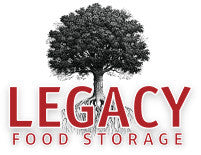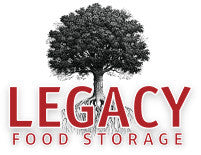Winter Composting: Make Your Garbage Work for You
In the snowy, white-washed winter months, sometimes it’s hard to remember what green grass looks like or recall the smell of dirt. This is one of the reasons winter is my least favorite season, and I am always looking for ways to bring a little bit of June into January. One pretty great way to do this and to become more self-reliant in the process is to practice composting through the winter.
Why compost?
Composting is a responsible and rewarding habit. One third of landfill space is reportedly filled with materials that could be composted. Composting our own waste keeps the landfills a little bit freer and is thus an efficient and self-reliant way to dispose of waste. It is also a supremely beneficial practice for the garden. Compost adds crucial nutrients to soil and makes it a wonderland for plant life to grow in. There are few things as advantageous as good compost for the vitality of a garden and for keeping soil healthy and productive. Composting is not hard to do, and when you get in the habit of it, you start to feel like you are participating in a beautiful process: consuming food and then putting it back in the earth to help more food grow. At the risk of sounding too cheesy, it simply feels good to compost.
And the best news is, composting doesn’t have to end when the first snow begins to fall.
Winter Composting
The big goal in composting any time of year is to help aerobic bacteria thrive and multiply within the compost pile so that it can decompose the pile and turn it into compost. Successful decomposition of any compost pile requires three things: proper aeration, the right amount of moisture, and the right carbon to nitrogen ratio.
Composting in winter time is different from composting in summer time for obvious reasons. In the winter time, you must battle cold temperatures and excessive amounts of moisture. Cold temperatures can slow or even stop the composting process, and if a pile gets drenched, it can lose its valuable air pockets and become ruined. However, with the right conditions, decomposition can still go on in the deep center of the pile, even in the cold winter months, and if it does stop, it will start again when things warm up.
Following are a few tips for keeping your compost pile viable through the winter.
Winter Composting Basics
1. Cover it up. Building a roof over your compost heap will help you control the amount of moisture it receives. If you don’t want to build an actual roof, you can also cover it with a tarp.
2. Protect it from the elements. To keep the cold from getting to the center of the pile, you will want to make sure it is walled in somehow. You could construct a basic structure out of cinder blocks, put your pile in a compost container, or surround it with hay bales for an excellent insulating measure. Having some kind of barrier around your pile will shield it from the cold weather and give it a better chance of continuing its processes. Another great option is to dig a hole and bury your pile for the winter. Then every time you add some fresh matter to it, put a layer of dirt over it.
3. Make it big. You can also make your pile very large to help it last longer. The bigger the pile, the more heat it will generate and hold in. If you have long and cold winters, build up a big pile in the fall to keep your pile strong through the winter. You will want your pile to be at least a cubic yard, more for very cold places.
4. Add more brown matter than usual. Brown matter includes leaves, tree branches, and other yard waste. Brown matter gives bacteria energy whereas green matter (like kitchen scraps) helps bacteria reproduce. In winter months, whenever you add green scraps, add a layer of brown material too, like leaves or shredded newspaper.
5. Keep scraps small. In the winter time, because the bacteria will not be as active, it will be harder for it to break food scraps down. Break your food scraps down before you put them in your pile by shredding or cutting them into pieces smaller than two square inches to give the bacteria a little help. This will allow the pile to heat uniformly.
6. Don’t turn the pile. Turning your pile is a great idea in warm weather, but in colder temperatures, it’s best to just leave it alone so that precious heat doesn’t escape.
Following these tips can help you extend the life of your compost pile and allow it to stay active until spring comes again, but if you don’t feel up to the extra work required to keep your compost heap going in the winter, you might consider simply moving your composting indoors. There are a variety of indoor composting systems available, including composting containers that heat up your kitchen scraps for you and turn them into compost within a few weeks, vermicomposting systems (worm boxes), and bokashi systems (anaerobic composting buckets). For more information on indoor composting, read this great review of three common indoor composting systems: http://www.chow.com/food-news/54730/indoor-composting-systems/.
Winter can be a desolate time largely because of the lack of growing things and working with the earth. Composting extends the satisfaction that comes from gardening into the dead winter months. Anyone who regularly composts their kitchen scraps knows that once you have started composting, you can never throw a banana peel in the garbage again without feeling wasteful. Composting in the winter is an earth-friendly, garden-loving, self-reliant habit, and it is entirely plausible if you take the right measures.
More winter composting resources:
http://earth911.com/news/2012/01/26/your-guide-to-winter-composting/
http://www.compostguy.com/winter-composting/
The post Winter Composting: Make Your Garbage Work for You appeared first on Buy Emergency Food.
Tags
- All
- 25 year food
- 25 year shelf life food
- 72 hour kit
- Best food storage types
- Best long-term food storage
- Blizzard preparedness
- Budgeting
- canning
- Certified GMO-free Emergency foods
- Certified GMO-free foods
- Coffee
- Comparison of emergency food methods
- Composting tips
- Dangers of genetically modified foods
- dehydrated food
- Edible Wild Plants
- emergcy preparedness
- Emergency Cooking
- Emergency Food
- Emergency food Christmas gifts
- emergency food storage
- Emergency Food Supply
- Emergency food supply recommendations
- Emergency Planning
- Emergency Preparedness
- Emergency preparedness advice
- emergency preparednesss
- Emergency Supplies
- Emergency supplies checklist
- Emergency Survival
- emergency survival gear
- Emergency survival kit checklist
- Emergency Survival skills
- exercise
- Family emergency preparedness
- Family emergency preparedness plan
- Family Preparedness
- Food Storage
- Food storage 25 year shelf life
- Food storage amounts
- Food storage Christmas
- Food storage containers long term
- Food Storage Secrets
- Food storage serving size
- Food storage types compared
- freeze dried food
- Freeze dried food storage
- freeze dried meats
- Freeze-dried emergency food storage
- Fruit Trees
- Gardening
- Getting Started
- Gluten-free food Storage
- Gourmet emergency food
- Healthy food storage
- How much emergency food to store
- Improved emergency preparedness
- Jared Markin
- Jared Matkin
- Legacy Premium
- Lessons learned from Hurricane Sandy
- Lessons learned from natural disasters
- long-term food storage
- Long-term Food Storage Guidelines
- Long-term Food Storage tips
- Long-term water storage
- Mental Emergency Preparedness
- Mental toughness
- Money-saving tips
- Natural disaster planning
- Natural Disasters
- Perfect Christmas gifts
- Pet Emergency preparedness checklist
- Pet Emergency preparedness kit
- Pet Emergency Survival tips
- Pets and Emergency Preparedness
- Plant Foraging
- portable solar panels
- portable solar power
- portable water filters
- protein drinks
- Risk of genetic modification
- Seed saving and storage
- Seed saving guide
- Self-reliance
- Self-reliant practices
- Shelf Life
- Solar Cooking
- Solar Ovens
- Special Dietary needs
- Stranded in a car in a blizzard
- Survival food
- Survival Gear
- survival kit
- Survival kits
- Survival Ovens
- Survival Skills
- survivalist gear
- suvival kit
- Tree Pruning tips
- Tree Trimming basics
- unique ideas
- water bottle with filter
- water filter
- water filter straw
- water filters
- Water Filtration
- water pitcher with filter
- water pitchers with filters
- Water purification
- Wild Food Foraging
- Winter composting
- Winter driving
- Winter preparedness tips
- Winter storm preparedness tips
- Winter Survival







